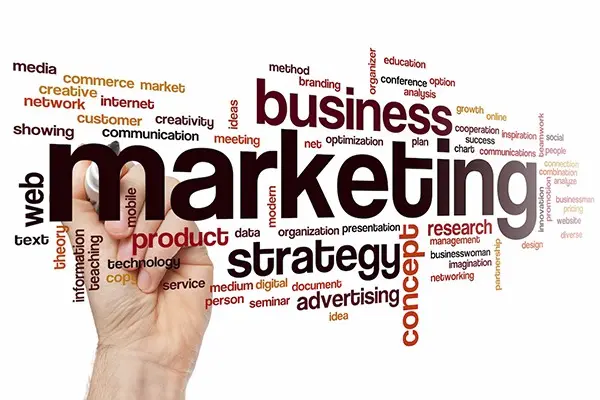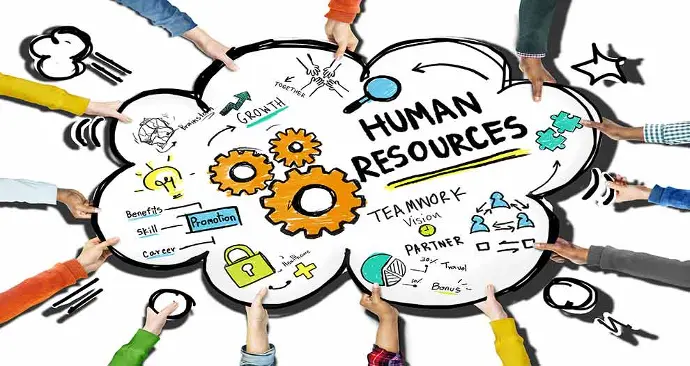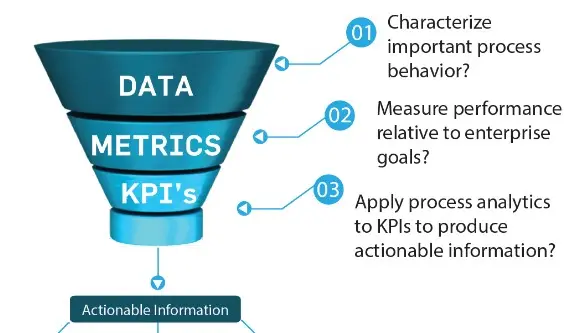Functional Areas

Marketing: Detecting Value
We believe the focus should be on detecting what offers value for your targeted customers and develop a value proposition that is truly convincing. We first look at required outcomes before product features; it implies an intense customer focus. When we know what the required outcome is, we can try to establish a complete product and/or service offering to achieve that.
Quantification of market potential is important to guide your investment in each segment / solution combination.
The better you know your buying personae, the better you can tie your message and your communication channel to these audiences.
Our expertise does not include the Publicity-part.

Sales: Know your Prospect and his markets
After Marketing has determined the Customer segments and their potential, Sales executes its sales plan. We can help with the preparation of the budget and its actualizations, help you develop better sales conversation scripts per segment, and help train your sales force. Sales people need to have knowledge of the markets in which their clients and prospects operate, knowledge of our own product and service offerings and thirdly of the Art of Selling.
It helps to set up a procedure in which market intelligence is captured on a wide scale and transformed in market intelligence. One could use of the framework of the 5 P´s of Porter. Always asking: ”What info would drive better decisions that have a true impact?”
Coaching your sales force can be a topic and giving them the support they need so they can run with the minimum possible distractions, like for instance the obligation to maintain a CRM to the nth degree.

Unlocking Logistics Excellence
The scope of logistics management involves warehousing, inventory control, order processing including picking, dispatch, transportation and distribution all integrated in a network of facilities. We also have extensive experience in sea transport and agency issues.
We have successfully helped clients to outsource their warehousing and distribution, simulating the required warehousing capacity given different forms of operating. In the same way we have optimized distribution and transport. The same we can do for your in-house operations, evaluate thoroughly and make concrete recommendations how to improve.
Although the number of possible topics in logistics is endless, contact us with your specific issue and we see if we can match you with the right talent of our consultants to help you resolve it.
A number of possible topics you find here:

Human Resource Solutions
At the heart of every successful company lies its human talent. Recognizing and nurturing individual abilities within the collective effort leads to better results and enhances talent retention.
We can help you with a variety of issues, ranging from calculating required capacity, developing HR-specific indicators, doing a tailored work climate survey, address causes of staff-turnover, better recruitment process, supervisor coaching in a variety of themes like giving feedback, one-on-ones, delegation etc.

Data Analysis and KPIs
We like to start asking questions like: “What makes a product and/or service truly effective from a customer´s point of view”. This can be your final customer, your distributor and your internal client. Next: “How could you measure this”. Then we ask how you could measure efficiency, i.e. deliver what the customer values as effective in the most cost-efficient way.
The idea is not to just create a report that then gathers dust, but rather to create relevant information and action-criteria, so that our clients focus on the real issues and act as pro-actively as possible to meet customer expectations.
What is being measured, gets the attention. But it is also important that we restrict the number of items we do measure; it is the same as with priorities: if you have hundreds, you basically have none. Scorecards help.
In our team we also have a specialist in data analysis at a large scale, like for instance in Retail POS data.

Creativity and Vision
As Eye-Openers, we embrace the power of fresh perspectives and forward thinking. While this isn’t a specific service offering, it’s woven into our ethos.
Let’s explore how vision and creativity play a pivotal role:
Click on each phrase to see more detail:
MARKETING
In a world of intense global competition, we believe that value sets you apart more effectively than price alone. Our expertise lies in helping you differentiate strategically. Here’s how:
- Clarify Your Sales Story: Craft a compelling narrative that forms the foundation of your communication strategy with key segments.
- Understand your critical customer segments and identify the specific added value you provide to their end customers. Strengthen this value to become an integral part of their value chain.
- Measuring Impact: Learn to measure the value you bring to your customers continuously. Be responsive to their needs and anticipate their requirements.
Cost Structure Awareness: Knowing your cost structure is essential. Often, we do not take into consideration many “hidden” costs. We guide you in understanding it thoroughly, develop standard costs with feedback loops on accuracy, and show you simple costing models. Whatever you pricing decision will be, it will be based on full cost, so you take a conscious decision if this specific bit of business is allowed to be sold below full cost, above variable cost etc.
We recommend that cost data are captured against a pricing proposal, so you can always compare expected margin with realized margin, so you can do a full variance analysis.
The same goes for specific assumptions, like expected utilization and volumes.
Running simulations is a good use of time invested, so you can also indicate limits to your prices´ validity. Often people greatly exaggerate the business volume they will give you and you will give them a great price. What happens with your expected profitability if the realized volume is only 25% of the forecasted volume? How will this reflect in your pricing structure?
Master the art of selling based on contribution or margin.
Let us help you visualize as clear as possible your customer segments, to create value they want and to identify them efficiently.
SALES
- An annual budget with a monthly projection for the next 12 months is a very helpful tool to directly reflect latest market information. The annual budget is used for utilization and capacity calculations, procurement framework contracts but with the rolling budget these can all be actualized.
- Granularity Trade-Off: Detailed forecasts (e.g., SKU/location) increase variance exponentially, affecting inventory levels.
- Cost-Benefit Balance: Spend time wisely — forecast accuracy should justify effort. Safety stocks maintain service levels efficiently.
- Sales Forecasts are considered more short and medium term, and looking at specific opportunities per customer segment.
- Perishable or Seasonal Products: where rolling budget or sales forecast directly drive production scenarios inaccurate forecasting does directly impact bottom line. From purely subjective forecast we can seek to improve accuracy with historical data, seasonality, and special sales actions.
- Strategic Partnership: By seeing through your customers’ eyes, you become a true strategic partner. Anticipate their needs, adapt your offerings, and provide valuable suggestions. Define the value you offer from their perspective and maximize it.
- Consultative Approach: We teach consultative selling techniques, with several techniques like stakeholder mapping as nowadays more and more people in the client organization influence the purchase decision and the client in general becomes visible for the selling company at a far later stage in the purchase decision. How you can accompany the prospective client in their purchase decision…
- Effective CRM implementation: capture what you will use and do use it to drive relationship building and follow-up.
- What we incentivize drives behavior, sometimes with some unexpected side effects.
- Strive for balance: a system that’s simple yet guides daily sales activities while incorporating factors they control and influence.
- If sales people cost their own proposals, you could consider incentivize on margin created.
- At the level where the inventory-level is decided, incentive on both revenue/margin and cost of inventory.
- Determine the right variable percentage, so people feel motivated but not stressed to the extreme where they do not know if they can pay the bills of the month.
- Do we set team incentives or individual incentives? We like to incentivize not only what is strictly under full control but also what can be influenced to a significant degree.
- Remember, a well-crafted incentive scheme aligns with your overall goals and minimizes unintended consequences.
-
UNLOCKING LOGISTICS EXCELLENCE
- Operational Planning Driven by Sales Forecast or Budget:
- Begin with the Sales Forecast or Budget as the foundation for operational planning.
- This planning journey involves calculating Required Safety Stocks based on dispatch service levels for both Production and Purchase Orders.
- Dimensioning Warehousing Space with Care:
- Armed with Required Safety Stocks and an understanding of expected demand variations, we delve into warehousing dimensions.
- The space required extends to CD-layouts, encompassing areas for raw materials, reception, picking, and dispatch.
- Notably, the frequency of dispatch plays a pivotal role in determining this space.
- Adapting to Demand Patterns in Production:
- Demand patterns—sometimes predictable, sometimes capricious—guide our actions.
- In production, we replenish safety stock or swiftly respond to unexpected demand, like agile dancers adjusting their steps.
- Raw Materials: Availability and Lead Time:
- Raw materials—the silent architects of efficiency—deserve our attention.
- Consider their availability and purchase lead time; they shape the entire performance.
- KPIs: Measuring Chain Effectiveness:
- Our compass: Key Performance Indicators (KPIs). They harmonize the chain, transcending individual components.
- Product rotation and warehouse layout—the choreography. Service levels agreed with customers—the scorecard.
Together, we’ll calculate safety stock based on expected demand, installed capacity, and primary product availability. We’ll model various scenarios and align incentive systems to optimize meeting customer demand while minimizing costs. Avoid underproduction or overproduction—both can strain warehouse capacity and risk product obsolescence.
- Based on your flows In/Out of both raw materials and final goods plus your distribution and transport capabilities we can calculate an optimal Distribution Center capacity including a suggested lay-out with the different operational areas.
- We can review current capacity of your Distribution Center versus your flows and identify bottlenecks and give you suggestions where you can optimize.
- If you are looking to be closer to your customer with your inventory, we can help you with identifying a distribution of your regional DCs and warehouses.
- There are two aspects: a/ which is the agreed time lapse between placing the order and receiving the product, and b/ compliance with promises, (OTIF On Time In Full)
- Having your inventory live available for your sales people is very helpful; for out-of-stock situations we could agree specific date of availability and measure again compliance.
- One should look at the internal fullfillment cycle (picking, stock transfers, possibly ad-hoc production) and add to that transport frecuency and time.
- How do you handle unexpected events like road collapses? Let’s strategize.
We’ll estimate product costs across different service areas. Be cautious if your product lacks differentiation—clients sourcing from multiple providers may have better information. Always treat averages with utmost care.
- Several of our consultants have hands-on experience in negotiating warehouse space and also truck capacity.
We have a team of experienced consultants who actively engage in both WMS (Warehouse Management System) and TMS (Transportation Management System) implementations. Our expertise allows us to guide you in selecting the most suitable software, tailored to your existing work processes. After conducting a thorough analysis of where you’d like to enhance your current processes, we aim to transform your logistics into a strategic differentiator. What’s your vision? Let’s make it a reality.
When the topic of your interest is not listed, give us a call so we can explore if we can be of help.
HUMAN RESOURCES SOLUTIONS
- Facing challenges in your hiring process? We offer options and best practices to improve recruitment.
- Beyond first impressions, we objectively evaluate diverse candidates. Where there is an company environment open to constructive criticism, recruiting for complementary skills often yield superior outcomes compared to seeking clones of existing team members.
- Staff rotation can disrupt service levels and incur costs. We focus on improving retention and motivation.
- Informed by engagement studies, we provide targeted interventions—workshops on steward leadership, active listening, feedback, and one-on-one sessions. Strengthening the employee-boss relationship positively impacts overall company culture.
- Amid constant organizational change, clear process maps and dynamic job descriptions are essential.
- To work more constructively with knowledge- and experience requirements we can create a competency library, showing for each level recognizable behaviors.
- These competency levels aid in the selection process and gap analysis when hired. Capacitating from day one is then possible rather than wait for failure. Evaluating performance is more instructive and when the company is willing to invest in a Learning Management System, every evaluation can result in self-driven training.
- People build their "competency passport".
- It could be very beneficial with career planning and succession planning.
- We create competency profiles for each job role and job holder. Then we can match the two looking to minimize differences and shoing competency gaps and rank. This can be a very useful tool for career planning and succession strategies. A very important benefit would be that it would be deemed a more objective method compared to making shortlists of different candidates based on the different managers' perceptions.
- Proactively we could indicate where to strengthen skills to be a better candidate for a specific role.
- In a competitive labor market, remuneration matters.
- Your personnel look at risks, rewards, opportunity cost, development opportunities and how specific and “locked-in” would their knowledge be. What would make an attractive package and how can assure that we deliver on our promises? Can we add a variable component based on performance? How can we continuously update our labor market knowledge?
- Effective communication starts in the relationship collaborator – direct superior, whereby we need to ensure that the goals, processes and support structure are clearly explained. Feedback plays an important role, and when using one-on-one´s we also have the space to receive feedback and suggestions as a superior which might shed new light on what is happening at the frond-end of the business. Effective communication implies the true willingness to receive, to listen rather than impose. With a better-informed understanding we then can take more robust decisions which more likely be implemented as they were as it were “co-created”.
- We can organize workshops where leaders can practive differet skills, like for instance situational leadership.
Let us help you optimize your human resource practices for asting success!
DATA ANALYSIS AND KEY PERFORMANCE INDICATORS
- How do we truly know if we’re delivering exceptional products or services? It is not only asking our customers how they evaluate us; we should evaluate ourselves critically and define best performance creating real value.
- Your customers also have shifting interests and are progressing on their plans to reposition themselves in their competitive landscape; we should always ensure that we measure what is most relevant for the client today! Yesterday´s KPIs might no longer interest them. And it is not only the measurement, but especially the criteria when we intervene, that should be aligned.
- Afterwards apply a break-down structure to make sure your processes deliver the required quality as client outcomes.
- Where-as in the analysis of for instance purchase data of large customer databases we look to detect patterns, in management control processes, we prioritize defining the right questions before seeking or creating data.
- What do we want to monitor, is it sufficiently relevant and when do we want to intervene.
- Always weigh the cost of data capture against the value it adds to decision-making. Capture only what matters and about which you are willing to act.
- Share your live scorecard openly. Act promptly on defects and sub-standard performance before clients reach out to you.
- Internally, balance leading and lagging indicators. Focus on meaningful metrics that drive positive change. Every measurement comes at a cost and every KPI takes up management time. Make sure it is time well spent driving action.
- Management Accounting can be very helpful with analyzing data to take better decisions. For instance, with respect to understanding your full costs, where we might have to apply both the inclusion of standard costs and cost allocations. When using standard costs, you do have to monitor their accuracy and adjust in a timely fashion.
- Many companies lack a comprehensive grasp of costs. For instance, we encountered a repair workshop with fixed prices, but no measurement of actual man-hours spent on repairs. How do you price a manhour, what cost allocations are included…
- Being aware of your complete costs ensures that your decision-making process incorporates the essential factors needed to maintain your company’s long-term sustainability.
Let's harness data for informed success!
CREATIVITY AND VISION: INSPIRING A BETTER FUTURE
- Break free from current constraints. Imagine the dream scenario — what would be great? Consider alternative perspectives. Ask “why” relentlessly to check if the dream truly would create value.
- Our vision becomes a catalyst, inspiring teams, partners, and stakeholders to co-create a compelling future. Even if today something is not possible yet, we can work towards solving today´s constraints.
- It is highly unlikely that a master plan will be executed exactly as it was planned. We test our best insight, learn and define the next steps. All the time advancing towards our “true north”.
- Especially when you involve your team and collaborators in the effort and are open for their input, you are far more likely to come up with steps that truly work. Ad you gain the support of your team so it is now “our” project and no longer imposed.
- We often cling to limiting beliefs or settle for the familiar. Fight it. Whatever we think as a solution, probably has been thought of elsewhere already and very likely we can find thoughts published somewhere which could guide us. Limits often exist only in our own minds. So much more is possible than we initially think.
- We facilitate idea development, explore fresh perspectives, and stimulate creativity and organizational development.
- Making associations with other industries can show different ways of solving problems which could be migrated to your industry be it with modifications. It sparks imagination and “aha” moments. Fresh air breathes life into possibilities.
- Consider an example: A company having to dspatch goods on customer-paid transport regularly faced delays. Drawing inspiration from airport terminals, they now ensure all goods “board” the right transport promptly, using the association "all passengers on board."
Remember, vision isn’t just about seeing—it’s about creating what we see. Let’s shape a brighter future together!